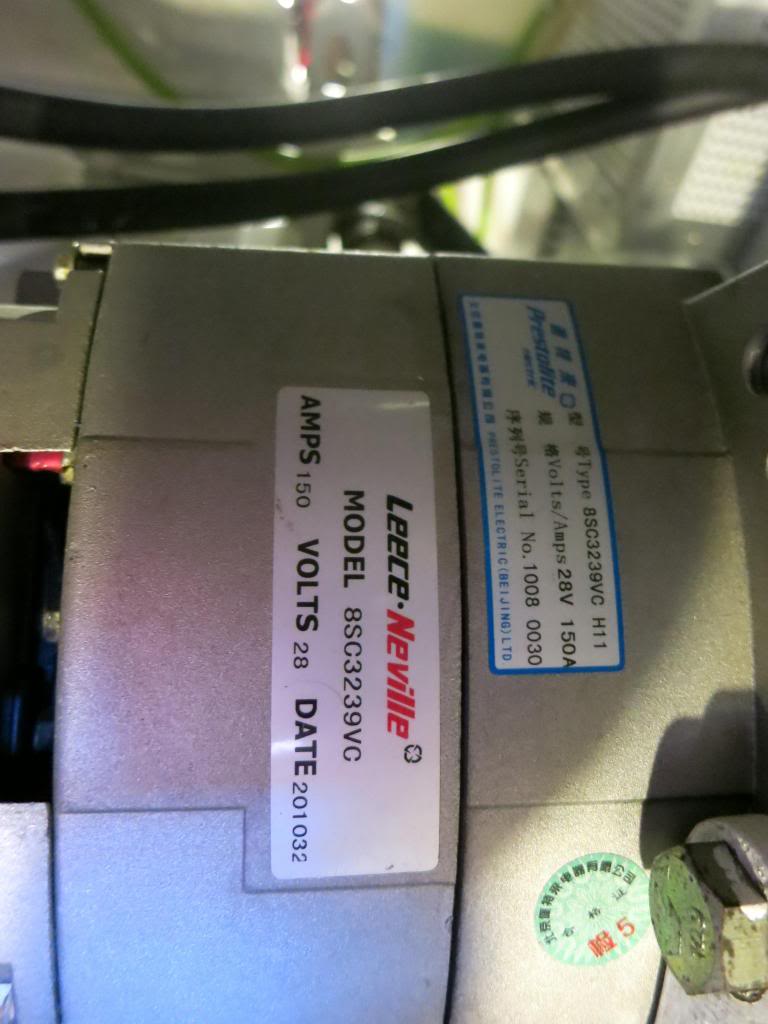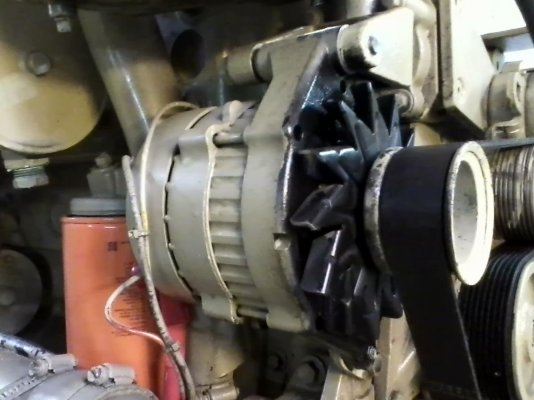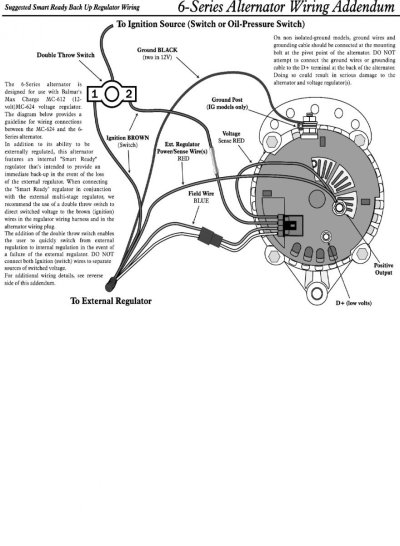One reasonable approach is to match your alternator output to your battery bank and your expected running time.
If your house bank capacity is 450 amp-hours and your batteries are flooded lead-acid, conventional wisdom recommends that you don't use more than half the capacity before recharging. Your useable capacity between charges then is 225 ah, or maybe 2 days use on the batteries if you use your refrigerator.
If you use your existing self-regulated alternators, their charge curve is not very good and it would take several hours running to recharge -- they won't actually put out 55 amps, and they won't put out a consistent high charge rate. That's just the way self-regulated alternators work.
Flooded lead-acid batteries won't accept a charge higher than a certain level without boiling the batteries, and that rate is around 20-25% of their amp-hour capacity. For your hypothetical 450 ah bank, you don't want to charge at a rate much beyond 100 amps anyway, and that will give you a 2 1/4 hour recharge time for 2 days' use.
Some ways to do that include:
Externally regulating the alternators you have with a regulator that can control both alternators to charge one bank, with provision for an echo charge on your starter bank. Balmar and Ample Power both used to have regulators that will do this. The combined output would probably be close to 100 A, for a run-time of around 1 1/2 hour per day of battery use.
Put one 100 A alternator and smart regulator on one engine for the house bank, and leave the other 55 A for the start bank. 100 A is the recommend max for a single V-belt, run time will be around 1 1/2 hour for a day's use.
Get a Go-power 100 A charger and power it with a Honda generator. Your run time would basically be the same 1 1/2-2 hours per day of battery use, and the charger would keep your banks topped off at the dock. This also gives you AC power on the boat and gives you redundancy if somehow both banks become depleted. Although use of a gas-powered generator on board is somewhat controversial, this option may give you the most capability for the dollars.
Install a generator.
Forget all this, change all your lights to LEDs, and use an Engle Fridge-freezer to freeze blocks of ice which you then put in a cooler or in your un-plugged refrigerator.
If you have to replace the house bank and have the money, you might consider changing to AGM batteries and putting in 2 high-amp alternators, since AGMs will accept a much higher charge rate. This would give you a running time of maybe 45 minutes per day of battery use to recharge.
If you run on the plane, your legs in the San Juans won't be very long -- an hour would get you between almost any 2 points. Even at trawler speeds the legs aren't long, often not long enough to provide the necessary charge time.
Any way you go, many will recommend a battery monitor as a first step, so that you can accurately track your usage and recharge rate.
I have 1 125A Ample alternator with an external regulator to charge a 700 ah battery bank. We use 50% as our maximum discharge and use a generator to recharge if we aren't motoring. The other alternator is self-regulated and charges the starting bank, with the ability to interconnect the banks to start or charge either bank from either engine.





